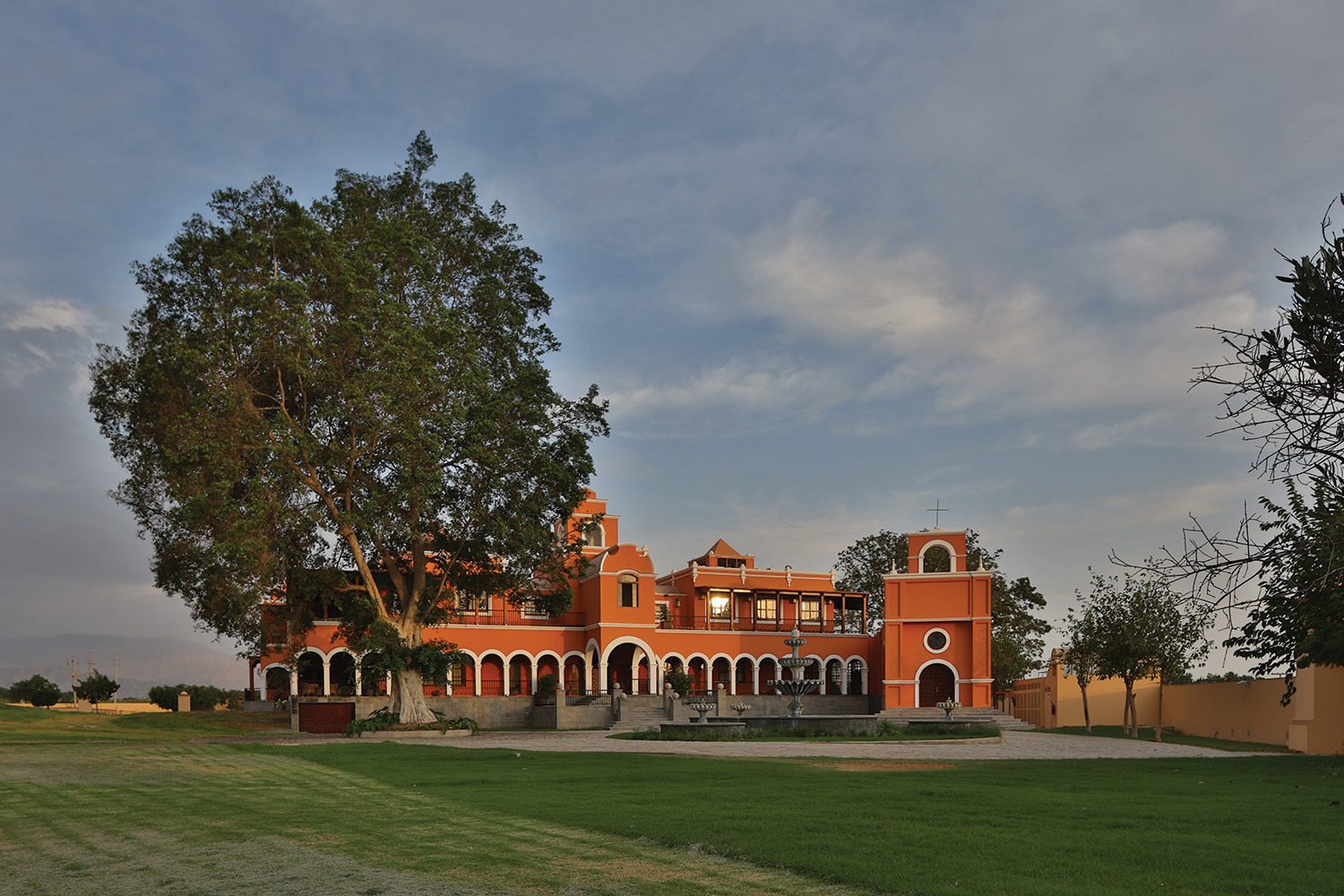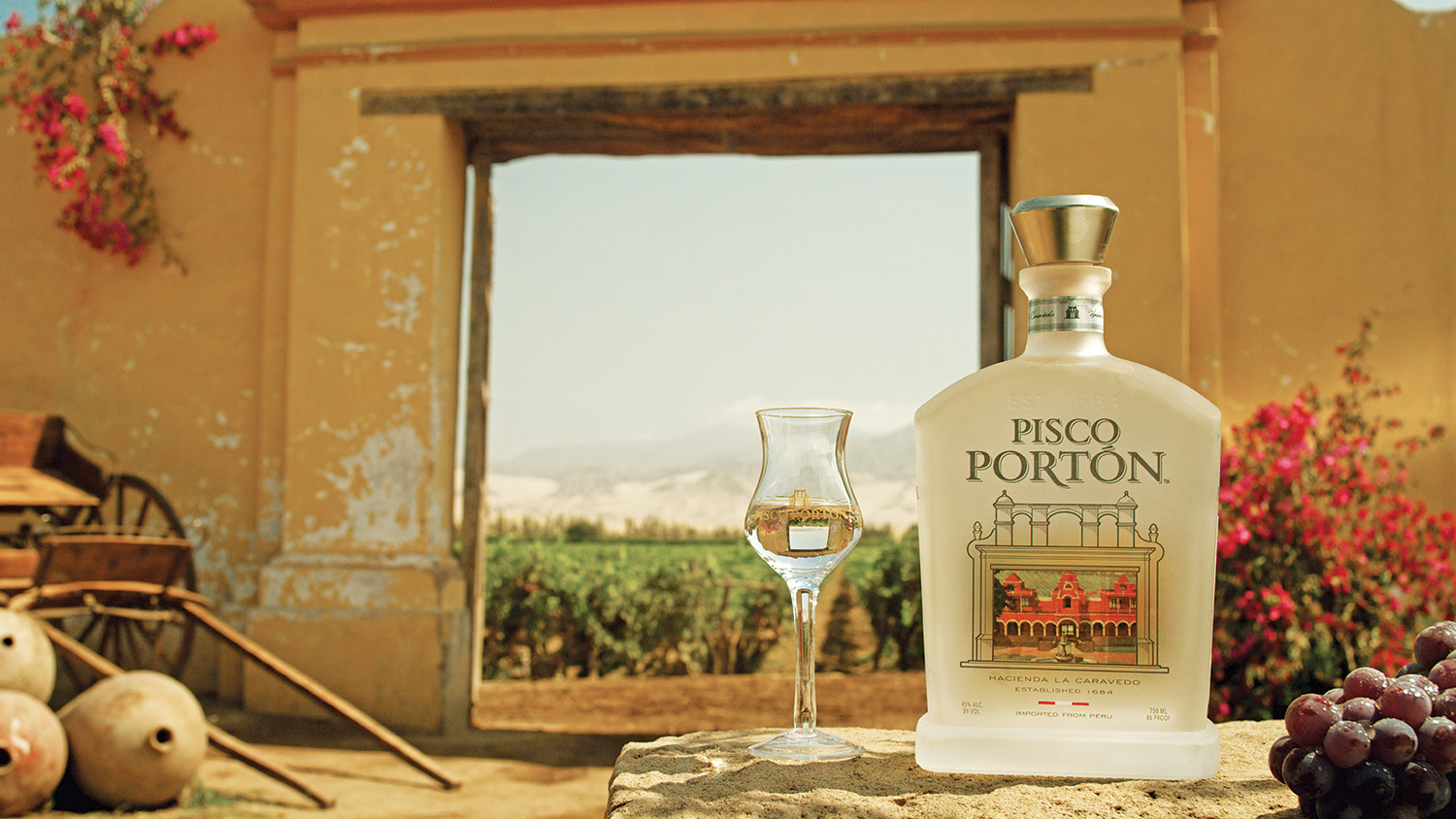BEHIND THE GATE: A LOOK INSIDE PISCO PORTÓN AND THE OLDEST DISTILLERY IN THE AMERICAS

Sometimes you tell stories over a drink and sometimes the drink is the story. To Peruvians, the history and tradition of Peru is entwined in the story of its national spirit, pisco. Honoring this heritage is what Pisco Portón, the makers of the most awarded pisco, do best. With a techno-artisanal distillery and estate-owned vineyards, the story of Pisco Portón is as unique and steeped in tradition as pisco itself.
For the uninitiated, pisco is a distilled white spirit made entirely of grapes with a 400-year- old pedigree. It has its roots in the 1560’s when the Spanish imported grape vines to the Ica Valley on the south western coast of Peru with the intent of making wine for use during the Catholic mass. Production grew, but feeling threatened and in an act of protectionist pique, the Spanish crown began imposing heavy taxes on Peruvian wine entering Spain. In an act of rebellion, vineyard owners turned toward distillation of the grapes instead and pisco was born.
Pisco has what only a handful of other spirits can claim: a Denomination of Origin. That means all pisco must be made in a specific region along the south western coast of Peru and under the strictest of guidelines, including the use of eight specific aromatic and non-aromatic grape varietals. The grape juice must be fermented with naturally occurring wild yeast, distilled only once in traditional copper pot stills, and left un-aged or unaltered, meaning that not even water is added to the finished product. Finally, it must be left to rest in non-reactive vessels such as concrete so only the flavors of the grapes are evident.
 Pisco Portón’s Master Distiller, Johnny Schuler
Pisco Portón’s Master Distiller, Johnny Schuler
In 2011, after living in Peru and developing a passion for pisco’s heritage and distinctive flavors, father and son team Bill and Brent Kallop set about bringing the finest expression of Peruvian pisco to the United States. Enlisting the aid of Johnny Schuler as their Master Distiller – who is internationally recognized as the foremost pisco expert in the world and received the Peruvian Congressional Medal of Honor for his work regulating the pisco industry—they purchased Hacienda La Caravedo, the oldest distillery in the Americas, established in 1684 by Juan Facundo Caravedo Roque. Here traditional production methods such as a wooden usillo are used to press the grapes, gravity-fed distillation is used to gently extract the flavors, and traditional wood-fired copper pot falcas distill the spirit. In addition, a state-of- the-art distillery with a lush rooftop garden to offset natural carbon dioxide emissions, and a water treatment system that recycles water from the distillation process to irrigate the vineyards, are also employed. The grapes are estate-grown with the utmost care and dedication to environmental stewardship.
From this combination of old and new technologies, Pisco Portón Mosto Verde was born and has become the number one exported pisco from Peru to the United States and the recipient of over 150 awards and accolades for its taste and quality. An acholado, or blend, in the mosto verde style, Pisco Portón Mosto Verde is made from the quebranta, torontel, italia, and albilla grapes and exceeds the standards for a traditional mosto verde pisco by containing 18 pounds of grapes in every bottle and resting for a minimum of one year to ensure the fullest flavors. They have also brought Pisco Portón Acholado and La Caravedo Quebranta to the United States, with more expressions available soon. The portfolio delivers the sophistication of the mosto verde, the complexity of the acholado, and the distinctiveness of the puro that provide a unique cocktail experience.
Tours of Hacienda La Caravedo are available and visitors pass through the original gate that welcomes them inside the lush vineyards and stunning distillery, with the Andes mountains as a backdrop to over 150 acres which includes the vineyards, distillery, tasting room, horse stables, restaurant, and boutique hotel. While a trip to Ica and Hacienda La Caravedo is a wonderful journey, one only has to sip a Pisco Portón Mosto Verde cocktail for an experience as bold as those who discover it.

Add Pisco Portón to your summer parties with these cocktail recipes:
PORTÓNERO
– 2 oz Pisco Portón Mosto Verde
– 1⁄2 oz fresh lime juice
– 2 dashes of Angostura bitters
– Top with ginger ale or ginger beer
Directions:
Build in a glass filled with ice by adding Pisco Portón Mosto Verde, lime juice, simple syrup, and Angostura bitters. Top with ginger ale or ginger beer. Gently stir and garnish with a lime.
PORTÓN PISCO PUNCH
– 1 (750ml) bottle of Pisco Portón Mosto Verde
– 12.75 oz. simple syrup
– 8.5 oz fresh pineapple juice
– 8.5 oz fresh lime juice
– Abundant ice
Directions:
Mix all ingredients in punch bowl or beverage dispenser. Serve in rocks glasses lled with ice. Garnish with pineapple chunks.

There are three styles of pisco: puro, which is made from only one of the eight approved grape varietals; acholado, which is a blend of two or more of the eight varietals; and mosto verde, a style applicable to either a puro or an acholado in which only the must, or freshly pressed juice of the grape, is partially fermented and results in the highest level of avor and aroma. While puro and acholado piscos require about eight pounds of grapes to make a bottle, a mosto verde pisco requires at least 16 pounds.
For more information and cocktail recipes, visit piscoporton.com. To book a tour of Hacienda La Caravedo or to inquire about a stay at the boutique hotel, contact tours@lacaravedo.com or call the o ce in Lima at +511 711 7800
